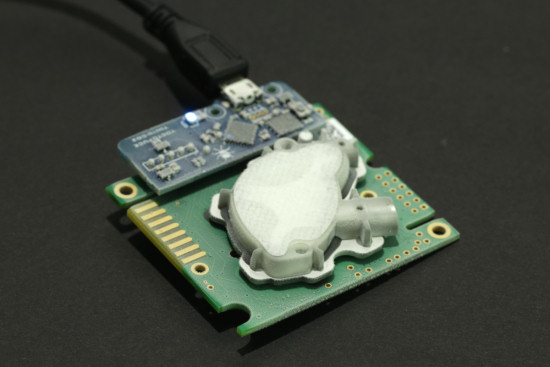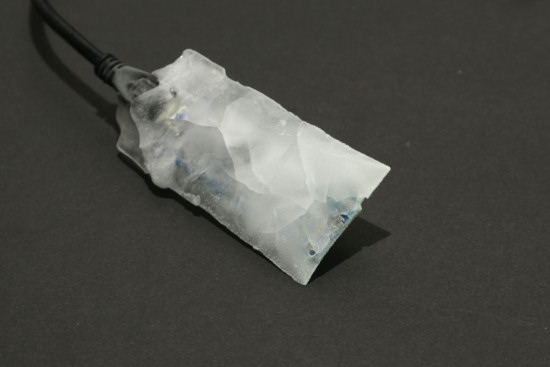![]() Now that we finally have our small dry ice freezer, we were able to perform systematic measures of cold endurance for our sensors and transmitters. So here are the tests that we performed and the results.
Now that we finally have our small dry ice freezer, we were able to perform systematic measures of cold endurance for our sensors and transmitters. So here are the tests that we performed and the results.
Methodology
A priori, we are not aiming to guarantee that our modules work at a temperature lower than -30°C, as the micro-USB connector is certified only until -30°C. But to increase our chances to detect any defect linked to very low temperatures, we performed all of our tests by regulating the temperature around -44°C.

Dry ice + Yoctopuce Device = pretty cold device
We tested how our different modules work, starting with an ambient temperature, then lowering it to -44°C to stay there for more than an hour. We checked whether the temperature change impacted the measured or transmitted values. We also checked whether, when the module was disconnected, kept off at a very low temperature for about ten minutes and then reconnected, it started again normally.
Results
As we have to this day received only very few comments on using our modules at very low temperatures, we didn't know at all what to expect. The news is good: the tests were largely conclusive. All the modules worked without interruption, despite the extreme conditions. Even some components which theoretically could have been impacted, such as OLED screens which are designed by the manufacturer for use until -25°C only, showed a behavior without issue.
The accuracy of electric sensors and transmitters (0-10V, 4-20mA, Pt100, and so on) is not impacted by the cold. Only the Yocto-PWM-Tx shows a deviation in frequency (up to 1,5%) similar to the one we noticed during the hot tests, because there is not external oscillator.
Among the digital environmental sensors, the only one which surprised us is the MPL3115A2 pressure sensor used in the Yocto-Meteo and the Yocto-Altimeter. Indeed, while compensated for temperature and having a good absolute accuracy guaranteed between 0°C and 50°C, the manufacturer gives an indicative accuracy only until -10°C. Below, nothing is indicated, although the sensor working range is said to go down to -40°C. We actually discovered that the pressure measure shifts significantly to the high when the temperatures goes down. It's therefore not ideal for some applications, such as high altitude balloon flights. We'll see if, for the next version of those modules, we can find another chip with an accuracy guaranteed on a larger temperature range.

The Yocto-CO2 doesn't work well below 0°C
Another sensor that doesn't work well below 0°C is the Yocto-CO2. This one wasn't a surprise as the manufacturer limits the working temperature to 0°C, but we actually confirmed that the sensor doesn't work well below. The tests weren't easy to perform, as our cold box saturates the atmosphere in CO2, but by cooling the sensor and then putting it in ambient air, we noticed the issue. We have to wait until the whole sensor has warmed up again, and until mist disappears from the optical components in the sensor for everything to work again.
So globally, the large majority of Yoctopuce modules work as is until -40°C. We are therefore going to document particular cases and guarantee them all in the limits specified by the component manufacturer, that is until -30°C. However, don't forget that this guarantee is valid only in dry cold (without condensation). The modules are not guaranteed to work in an ice cube...

Don't even try: it works a little, but not well...


